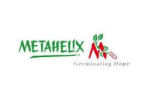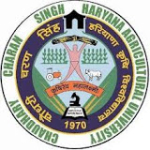CGIAR Research Program on Grain Legumes and Dryland Cereals - GLDC
Leader Damaris Achieng Odeny, International Crops Research Institute for the Semi-Arid Tropics - ICRISAT
Budget 2025
USD :
0
Clusters: 4
GLDC agro-ecologies are highly prone to negative impacts of climate variability and changes such as extreme drought and rising temperatures, and changing or new emerging pests and diseases. Enhanced resilience to climate change and improved crop performance under biotic and abiotic stresses are high priorities for the GLDC discovery and breeding programs. Significant potential exists for improving yields and yield stability in GLDC crops even under low-input conditions through systematic breeding, tapping the available natural diversity conserved in genebanks or induced variability, and modern tools and technologies. The dryland cereal and food legume crops of GLDC complement well by providing sources for energy, proteins and essential micronutrients and vitamins, thereby providing holistic and balanced diets in GLDC agro-ecologies. In addition, modern tools and technology platforms such as high-throughput sequencing and genotyping, SNP markers, transgenics, genome editing, and leveraging genomic information, etc., are common between legumes and cereals, thereby providing unique opportunities for their applications in CRP-GLDC in facilities that are in the regions where these crops are grown together.
The objectives of FP5 are:
- To widen the genetic base of GLDC crops under biotic and abiotic stresses by providing strategic pre-breeding lines to FP4 for new variety development and enhancing resilient dryland farming systems; and
- To provide an extensive tool kit of modern genomics, genetic enhancement, breeding tools, and high precision phenotyping for efficient breeding of GLDC crops.
FP5 will focus on, (1) understanding the genetic, molecular, biochemical and physiological bases of crop- and region-specific target traits, (2) deploying this knowledge through the development of tools and technologies for germplasm screening and selection of the mini core collections representing entire collection and (3) with FP4, utilizing these tools and technologies for the development of varieties and hybrids for local adaptation, end-use orientation, and tolerance or resistance to prevailing abiotic and biotic stresses.
Key outputs from FP5 include: 1) Identifying and utilizing superior and/or novel sources of target traits from evaluation of germplasm mini core collections and mutant populations; 2) Understanding genetical, physiological and/or biochemical mechanisms of target traits; 3) Providing diagnostic molecular markers/candidate genes for desired traits, and transgenics with novel traits for intractable constraints; 4) Establishing platforms and technologies for high-throughput genotyping, precision phenotyping, genome modification, genomic selection, and rapid homozygosity/generation turnover; 5) Developing breeding informatics tools and databases for improving efficiency of discovery and breeding programs; 6) Developing and enhancing capacity of NARES partners in integrated crop breeding; and 7) Expanding the network of partners and collaborators for efficient implementation of FP5 outcomes.
Blog Outcome Impact Case Report Policy
Innovations
-
Sub-IDO
Indicators
#
| Acronym | Project Title | Year | Section | Leader | Center | Budget | Start Date | End Date | View |
|---|












india.jpg)





























